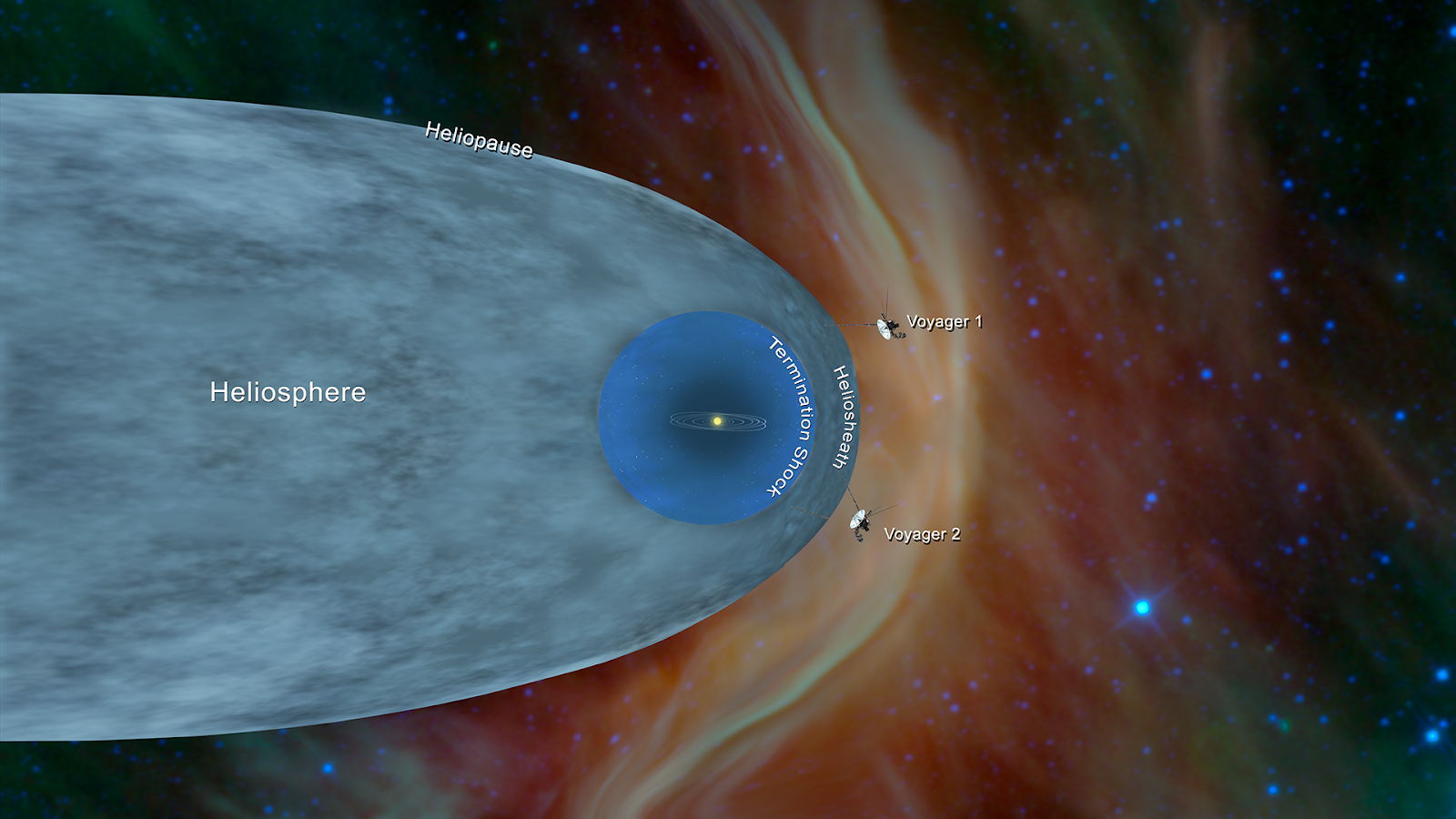New research, published in Nature Astronomy, reveals that there have been exciting new findings from the Interstellar Boundary Explorer (IBEX). Data from IBEX shows that there may be “oblique and rippled heliosphere structures” in the termination shock and heliosphere.
What is IBEX?
NASA satellite IBEX is in the Earth’s orbit, and uses energetic neutral atoms (ENAS) to create images of the interaction region between the solar system and interstellar space. It does so in pursuance of its goal, which is “to discover the global interaction at the boundary between interplanetary space -- largely dominated by solar wind streaming from the Sun -- and the interstellar medium”. The mission is led by Dr. David J. McComas, who serves as IBEX’s principal investigator, and is one of the author’s of the paper published in Nature Astronomy.
What is the Heliosphere?
The heliosphere is a giant bubble surrounding the sun and its planets, and is created by the sun’s constant discharge of charged particles, or plasma, collectively known as the solar wind. The solar wind travels about three times the distance to Pluto before it gets to the interstellar medium, forming the boundary of the heliosphere. The heliosphere is constantly being “inflated” by the solar wind.

Source: Wikipedia
The solar plasma gives way to interstella plasma when it reaches out of the heliosphere. The heliosphere is part of the interplanetary magnetic field, and protects the solar system from harmful amounts of cosmic ionizing radiation. It does not impede the progress of uncharged gamma rays.
The termination shock is the point at which the solar wind slows down to subsonic speeds due to interactions with the local interstellar medium. This leads to compression, heating, and changes in the magnetic field. The termination shock is 75 to 90 astronomical units (one astronomical unit is roughly the distance between the earth and the sun) away from the Sun. Voyager 1 crossed the termination shock in 2004, and Voyager 2 followed suit in 2007. The region beyond the termination shock is known as the heliosheath.
The heliopause is the point at which the solar wind is impeded by the interstellar medium, because its strength is no longer sufficient to push back the stellar winds of surrounding stars. The heliopause is the boundary at which the solar wind pressures and the interstellar medium are balanced. On 25 August 2012, Voyager 1 crossed the heliopause, some 121 astronomical units from the sun. Voyager 1’s data shows that the galaxy’s magnetic field is aligned with the solar magnetic field. The heliopause is interesting because you have reflected waves colliding with solar winds, resulting in an ENA storm, filling the inner heliosheath before the reflected wave bounces back at the termination shock.
The Findings
Experience informs us that we can figure out what the heliosphere structure is like based on correlations between solar wind pressure changes over a very long time, and ENAs. However, the IBEX team found that in doing so, they lost the dynamic features of the heliosphere.
The IBEX’s findings build upon very curious changes that it observed in 2014, when solar wind dynamic pressure rose by about 50% in just half a year, leading to a time and directional-dependent rise in roughly 2 to 6 keV ENA fluxes from the heliosphere. The team used that pressure enhancement to simultaneously derive the 3-D heliospheric termination shock (HTC) and heliopause (HP) distances at a high resolution. In doing so, they detected oblique HTS and HP surfaces, or, basically, large ripples, in terms of local interstellar medium upwind direction, with meaningful asymmetries in the heliosphere structure as opposed to steady-state heliosphere models. These large ripples are at an immense scale, measuring tens of of astronomical units.
Source: Nature Astronomy
Basically, we can now have a good picture of the interaction region between the solar system and interstellar space and its evolution over time. This will enrich our understanding of the heliosphere.
The team developed models to see how solar winds interacted with the solar system’s boundary. They determined that the pressure enhance event in 2014 reached the termination shock in 2015, leading to a pressure wave in the inner heliosheath.
The data collected by IBEX shows that the distance to the heliopause increased sharply between 2012, when Voyager 1 crossed it, and 2016. In 2012, the distance was 122 astronomical units, in 2016, when IBEX measured the distance, it was 131 astronomical units, and the last measure showed that the distance had grown to 136 astronomical units. Voyager 2’s data is more complicated to interpret: in 2015, the distance was 103 astronomical units, and in 2018, it was 119 astronomical units. This suggests that the shape and size of the heliopause are constantly evolving and expanding.
There is a probe scheduled for 2025, which will measure ENA emission at a higher resolution and a broader ranger. This will bring us closer to understanding this strange bubble.





Comments